
Walter Marsh
Walter is a writer and editor living on Kaurna Country.
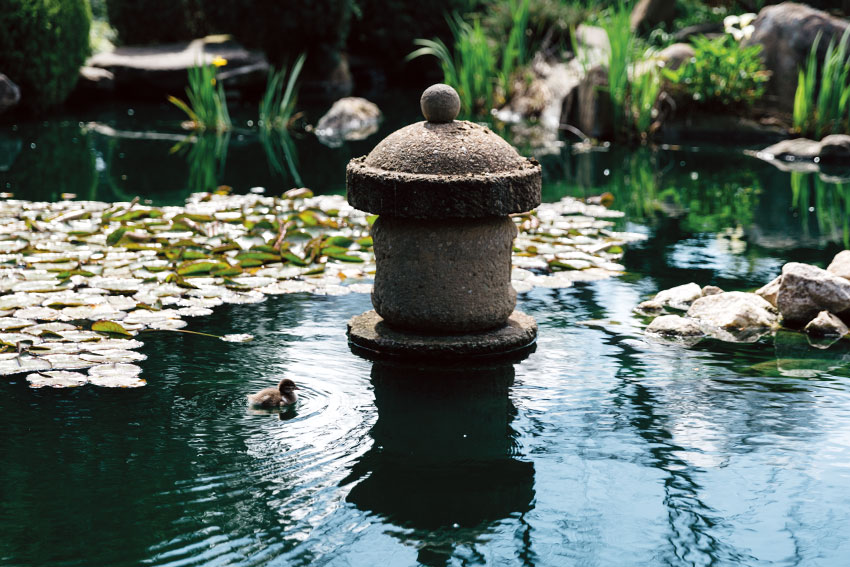
Today the Adelaide Himeji Garden is an oasis of calm on the city’s southern fringe, but the story of its creation is a somewhat rockier tale of traditional design principles and cultural exchange.
The high-flying optimism of the 1980s saw the South Australian government boldly look outwards, fostering new economic and cultural ties with cities around the world. In 1982 a new Sister City relationship was struck with the south-central Japanese city of Himeji, to be commemorated with the creation of a city garden – a slice of Japan in Adelaide.
After settling on its current South Park Lands site, the City of Adelaide’s landscaping department sought to consult widely with the Japanese community in designing the garden. In attempting to strike a balance between an authentic Japanese garden and something palatable to local residents, however, the garden’s first iteration missed the mark.
The bare cyclone fencing that ringed the garden when it first opened in 1985 earned it the sobriquet ‘Cowra’, an unkind reference to the New South Wales town that hosted a POW camp for captured Japanese soldiers. As historian Patricia Sumerling notes in The Adelaide Park Lands: A Social History, the dozens of fish sent as a gift from the mayor of Himeji were picked off by local birdlife soon after their introduction – a troubling omen as to whether the project would sink or swim.
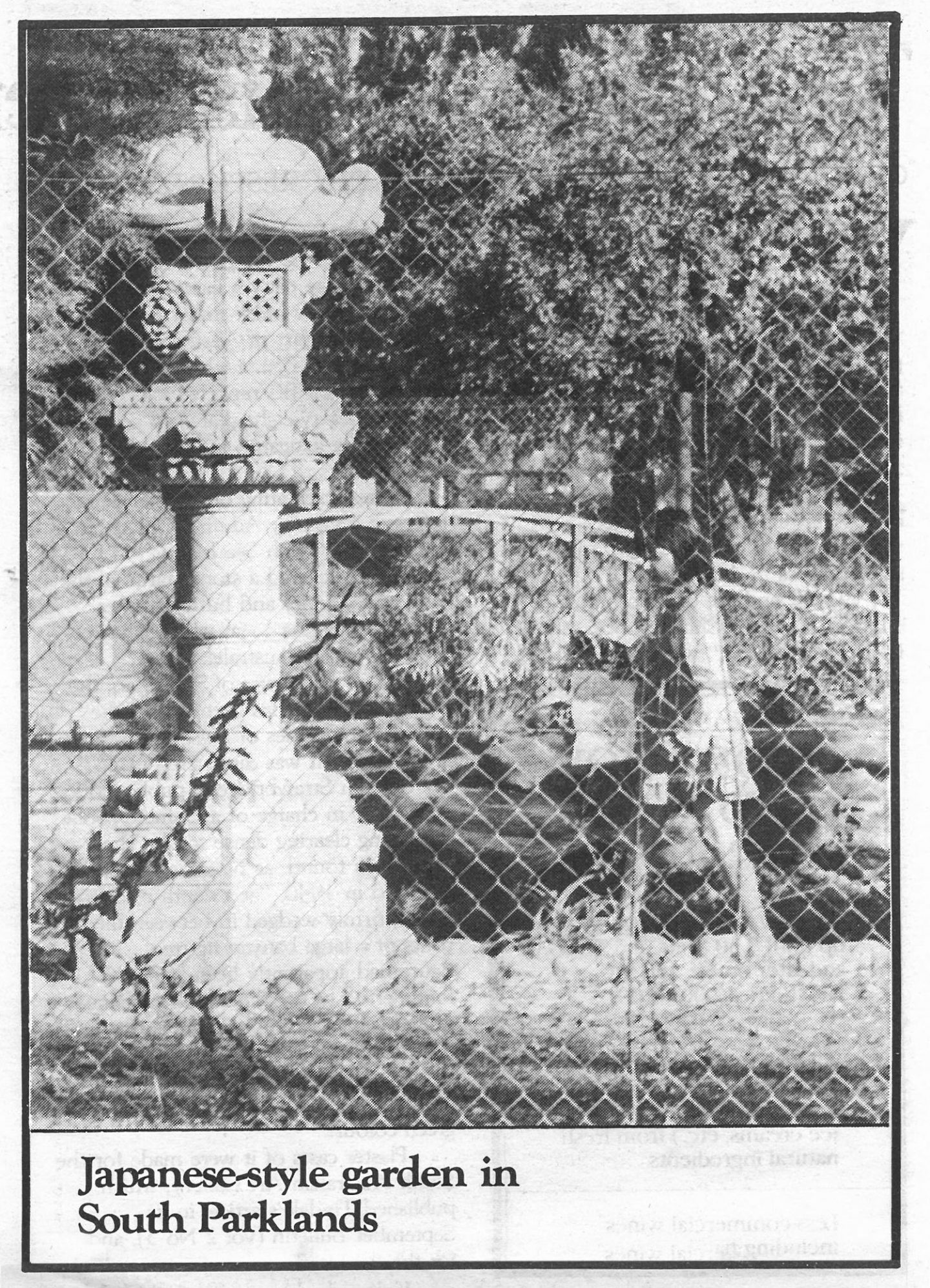
One such critic was journalist Peter Ward, who complained in these very pages that the first garden was a “quite ignorant pastiche” and “aesthetic disaster”. “No one seems to maintain it with that meticulous attention to detail that has been the reason why the great gardens of Japan have lasted centuries,” Ward wrote in a January 1987 edition of The Adelaide Review.
The garden’s saviour was a landscape designer named Yoshitaka Kumada. “In 1986, I visited Adelaide as a member of the Himeji City Sister City delegation to attend an event marking the 150th Anniversary of Adelaide, South Australia,” Kumada tells The Adelaide Review via email. While other commitments on the delegation’s busy schedule prevented him from paying the garden a visit, he was soon filled in on its so far limited success.
“On the flight home, I spoke extensively about it with the former mayor of Himeji, Mr Matsuji Totani,” he says. “During our conversation, we agreed that this commemorative project would not have been successful without the cooperation of Japanese volunteers living in Adelaide, and that we hoped that it was able to strengthen the connection between citizens in Adelaide and Himeji. At this time, I also came to learn that some Japanese residents in Adelaide were hoping to refurbish the garden to make is look more like a real Japanese garden.
“As I had not been able to see the garden myself, when I returned to Adelaide I met with Japanese residents in Adelaide, Adelaide City Council member Ross James, and other city officials. Upon returning to Japan, I decided to assist in the refurbishment of the Himeji Garden by drawing up plans, using my previous discussions as references and taking the budget into consideration. The trees and shrubs for the garden were purchased from Melbourne, and the stones were arranged near Adelaide.”
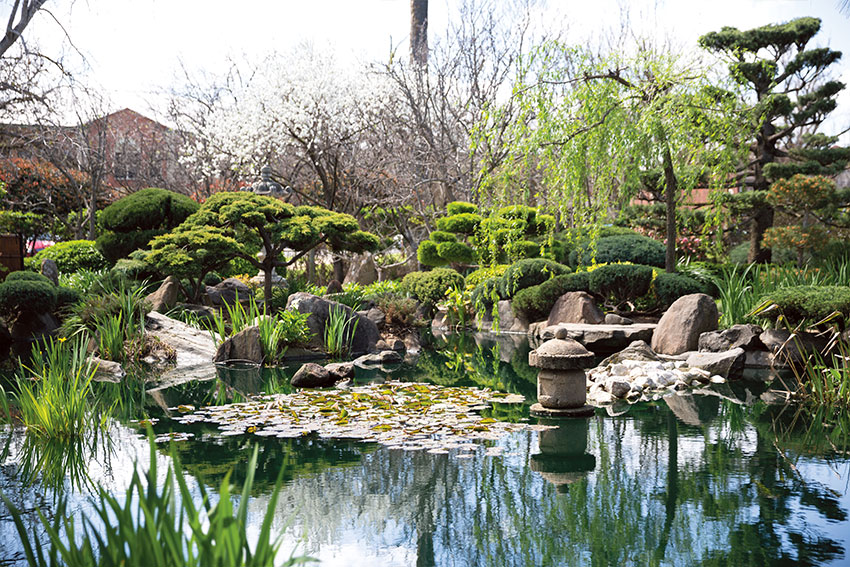
A Shinto ground-breaking ceremony in May 1987 kicked off a new round of works, which saw Kumada himself volunteer his services to lead an overhaul of the garden, reshaping its small lake, expanding the Sea of Sand and filling the garden with carefully selected plant life and ornamentation to complement the granite Okunoin lantern presented as a gift by the City of Himeji in 1985.
Today the garden provides a quiet escape for nearby residents, workers and tourists; during our visit, the gentle palette of spring blooms is peppered with splashes of active wear, hi-vis and white collars. Wind gently rustles the carefully manicured Matsu pines as the trickling sound of the Shishi-odoshi (deer scarer) water feature is periodically punctuated by the clap of its bamboo tube filling, then falling.
Much of Kumada’s design principles, and the carefully curated experience they invite, are still in place today. Halfway through our gentle lap of the garden, City of Adelaide Park Lands Ranger Peter Baldacchino points to a recently cleared area on the lakeside mound that stands in for a mountain. “It allows you to be enticed to look at something new or around the corner,” he says. “You’re supposed to stand at the standing stone,” he says, pointing to a spot near the entrance, “and you have a view right up to the waterfall along the lines of the garden.
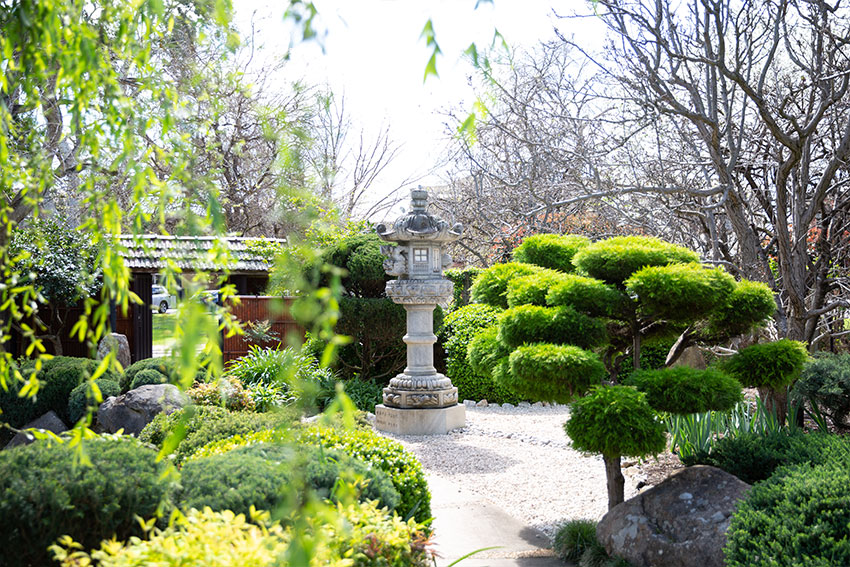
“Most of the paving stones are this size,” he says looking downwards at the Tobiishi stepping stones. “They’re designed so that an adult person takes two shorter than normal steps on each stone to avoid the gaps, it’s a psychological trick to slow you down and make you take your time.”
The spirit of cultural exchange continues, as the City of Adelaide’s horticulture team carefully tend to the garden using techniques taught to council gardeners by Kumada himself, passed down across subsequent generations of staff. “Fumio Ueda would also come in and give some training to local gardeners,” Baldacchino says of another key contributor to the garden’s formative years. “It’s passed on between gardeners as new people move in and pick up those skills.”
That includes the artful raking of the garden’s Sea of Sand centrepiece. “We do have a basic pattern which shows waves coming into those islands, straight lines for the ocean. Years ago, when there was more money around, it used to be raked everyday which is the traditional way… now we get to it every couple of days,” he says, showing off a pair of rakes made especially for the task. “Occasionally on the weekend if I come through here after hours and see a person or a fox has walked across it, I’ll fix it up.”
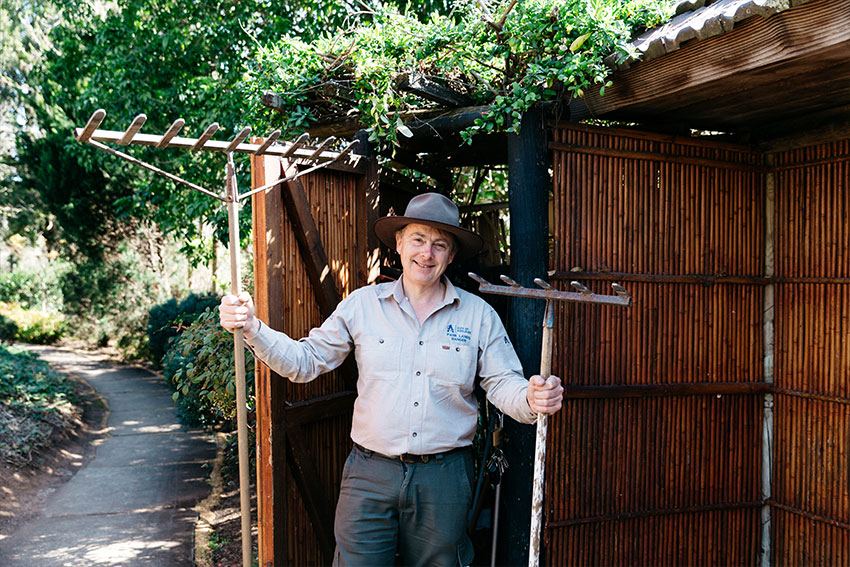
Kumada completed his vision for the garden in 1989, but Baldacchino, who started as a ranger soon after, recalls the designer making regular visits during the early 90s. “He’d come out for the Grand Prix each year and then do some work,” he says. “He’d come out every year and twiddle and fiddle around and teach the guys some things.
“When the Grand Prix stopped, we didn’t see him again,” he says. “But I think to a large degree he probably felt his work was done.”
“The main purpose of this project was to deepen the connections between the sister cities of Adelaide and Himeji,” Kumada reflects. “During the three years it took to complete the renovations, I visited Adelaide regularly to take care of the garden.
“I am delighted that the garden is enjoyed by the citizens of Adelaide, more than 30 years after its completion,” he says. “I hope that we can continue to deepen the connection between our two sister cities.”
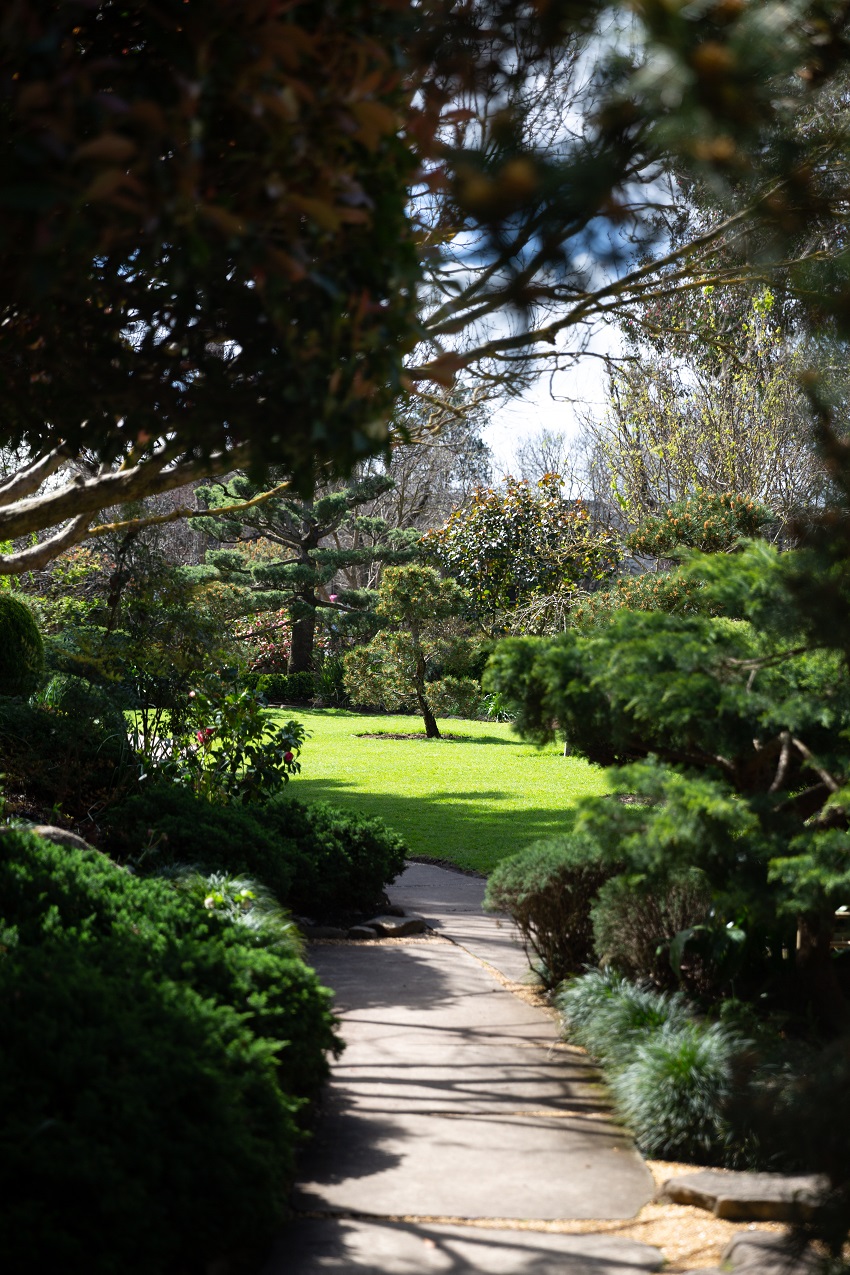
Adelaide Himeji Garden
Wita Wirra / Park 18

Walter is a writer and editor living on Kaurna Country.